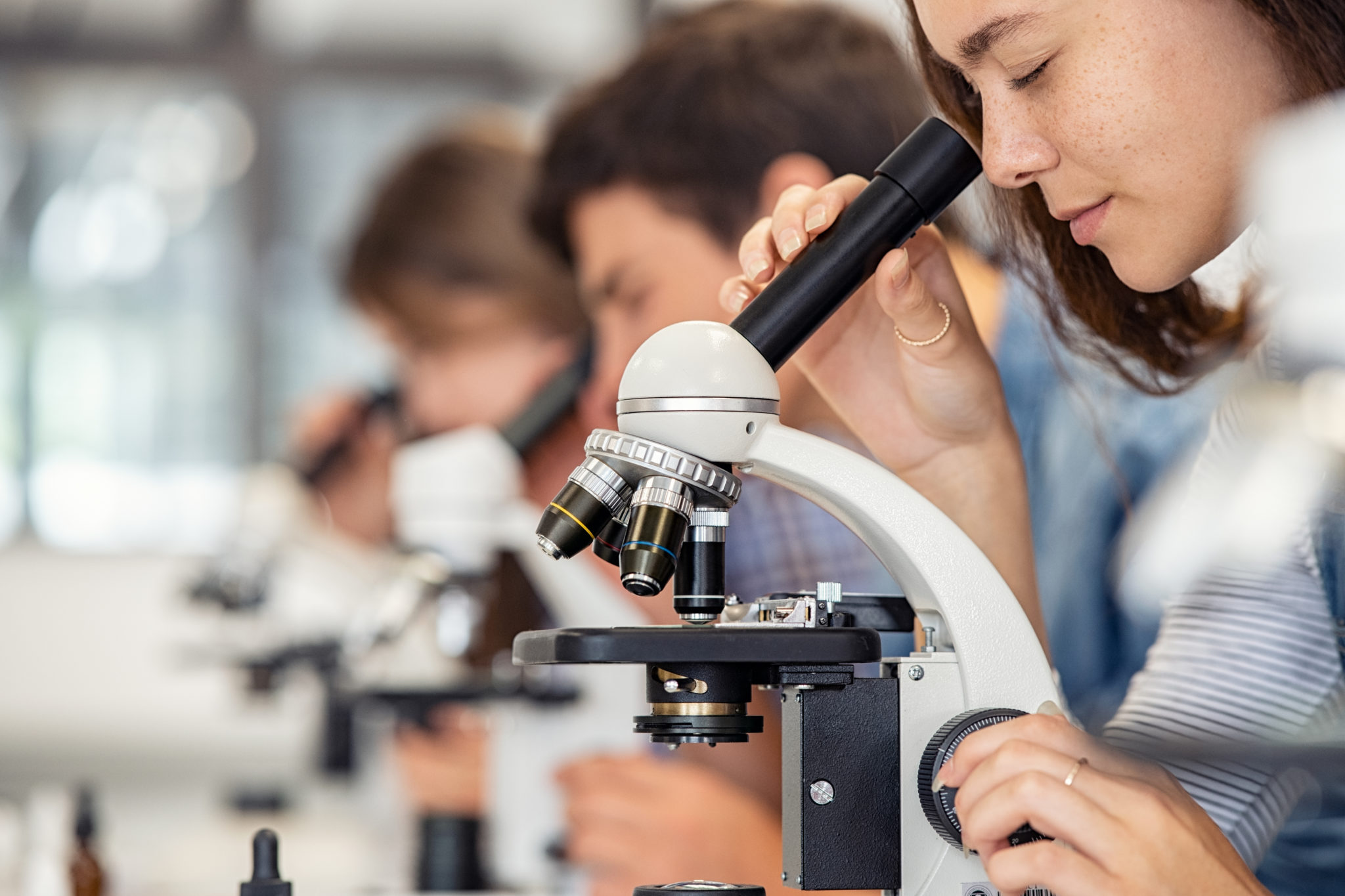I’m a Scientist Because God Pursued Me
“Where can I go from your Spirit? Where can I flee from your presence?”
Psalm 139:7
The impression that God was pursuing me and had something specific in mind for my life started at an early age. The question of just what that “something specific” was took much longer to figure out.
Childhood Trust in God as Creator
My decision to follow God’s call on my life took place in my elementary school years in response to my pastor’s explanation of the gospel. For as long as I could remember, I felt that God was my best friend, and now I was surrendering my life to him. This commitment deepened during those early years as I learned to fully trust God and experience the peace that accompanied his faithfulness in seeing me through life’s experiences.
Around this same time, I had my first encounter with the interplay between science and faith—what I would eventually come to see as my life’s true calling—while looking through my father’s telescope at the Moon, stars, and planets. I’m grateful God placed me in a churchgoing family with a father who encouraged my interest in science and a mother who was wise and nurturing. As such, exploring the heavens and the natural world came with the understanding that God was the Creator responsible for all we observed. This understanding was confirmed by what I learned at church, but I was hearing something very different in my public school biology class.
Scientific Challenge to Faith
My junior high biology teacher was an atheist. He informed us that what we’d be studying in his class would contradict what we’d learned at church. Decades later I don’t remember all the details of his lectures, but I do recall the popular diagram he presented. It depicted the steady linear progression from the ancestors of gibbons through about a dozen other primates to modern Homo sapiens. Using this diagram, the teacher implied that evidence from the fossil record proved the completely naturalistic and random-yet-lucky process of human evolution, and that this evidence provided a fully adequate explanation for our origins (contemporary evolutionists now call this famous diagram misinformative1). Leaving God out of the picture presented a dilemma for me: how could the truth about the God behind all creation be contradicted by his own creation? It didn’t make sense but, as a preteen, I didn’t know what to make of this apparent conflict.
Throughout adolescence, I was fully involved with church activities (choir, youth groups, Sunday school classes and Bible studies) and even gave the sermon at my church on “Senior Sunday.” But up until college my faith was mostly internal. Don’t get me wrong, as student body president and FOMO (slang for “fear of missing out”) queen, I was into everything from sports to music to cheerleading, and everyone knew I was one of those “Jesus freaks.”
Owning the Faith Despite Doubts
Still, college was a real turning point in my faith journey as I went through a period of reevaluating what I learned and believed as a child. I realized that the Christian understanding of the God of the universe purposefully creating us with the freedom to choose to follow him and sending his Son to restore relationship with him when we failed made a lot more sense to me than the naturalistic idea that all the intricacy and complexity of the natural world—including humans—came into existence by random chance or lucky coincidence. The result of all this reflection was that my faith became my own, rather than something other people had taught me and I simply accepted. It also became clear to me that my faith in God needed to be expressed externally so people could see that I was different. As the apostle James writes, “faith without deeds is dead” (James 2:26). Ever since that time, I’ve tried to serve others however God directs me.
Although I was always interested in math and science and had been encouraged by teachers and family members to pursue STEMM (science, technology, engineering, mathematics, and medicine) studies, the cognitive dissonance I’d experienced between the origins explanations given by secular science versus those I held true through my faith and personal observations of the created order caused me to turn my scholastic attention elsewhere. (It would take years of seriously studying both science and theology to resolve this dissonance.) Thus, during my senior year as an undergrad, while finishing my degree in political science, I did an internship at the US State Department studying arms control issues. While there, I realized that I would need a graduate degree to advance my career at the State Department, and that it would be advantageous for me to get a degree in engineering in order to contribute to arms control discussions in a meaningful way.
A Divine Pull toward Science
What followed was a series of miraculous events that demonstrated just how far God would go to pull me back to the STEMM career for which he’d predestined me. I was admitted to a master’s degree program in aerospace engineering at Stanford University, with nothing more than my BA in political science and some decent GRE scores. That program was one of the hardest things I’ve ever done, competing with students who’d already studied four years of engineering. But God got me through it, and a few years later I started my doctoral program, also at Stanford’s School of Engineering.
Overlapping with grad school, I worked as an engineer for Lockheed Martin on NASA’s Hubble Space Telescope and International Space Station programs. I received commendations from NASA and was designated as Lockheed’s Corporate Astronaut. I also worked at WET Labs on the Bellagio Fountains in Las Vegas, and at The RAND Corporation on policy aspects of aerospace issues, prior to transitioning into academia.
The resolution of my struggles at the interface of science and faith was a gradual process. While others might be able to point to one big “aha!” moment that resolved all their science-faith dissonance at once, for me it happened through years of persistent study and practice in accord with God’s promise that “those who seek me find me” (Proverbs 8:17).
God’s Pursuit Continues
Fast-forward to a few years ago. While teaching a university astronomy class I was invited to write an op-ed article for CNN’s website, giving a Christian perspective on the recent discovery of possible evidence for the cosmic gravity waves predicted by Albert Einstein. The CNN editor independently titled the piece “Does the Big Bang Breakthrough Offer Proof of God?” Probably at least partially due to the provocative title, the article immediately went viral, leading a Christian book publisher to offer me a book contract for God of the Big Bang: How Modern Science Affirms the Creator.2
The threads that weave throughout the book are also the most essential truths that resolved my own science-faith dissonance. Chiefly, these truths are (1) God reveals himself reliably through Scripture and creation, and (2) it is statistically extremely improbable that our life-friendly universe would come to exist merely through random chance. After publication of the article and the book, I was right in the middle of the science and faith dialogue doing radio, TV, and print interviews on a regular basis.
I still feel that God is my best friend, and he directs my paths by opening doors to opportunities for me to serve him in ways I could never have imagined. Every new opportunity reinforces my confidence that God’s ways are much better than my own. So far this has included working with students, building houses in Mexico, playing volleyball all over the world with Athletes in Action, singing around the globe with the Witness Ministry Team, playing women’s professional football, working as a test astronaut, and participating in both local and international conversations about science and faith.
Through the opportunities and experiences that followed my surrender to God many years ago, I’ve come to understand that the “something specific” of my calling is helping people (especially students) bridge the perceived gap between science and faith to realize that it’s possible to be both a faithful Christian as well as a top-notch scientist. This calling is at the heart of why I continue to walk through all the doors God opens for me.
Endnotes
- Xantha Leatham, “Theory of Errorlution: Famous Diagram Showing Ascent of Man Idea Is ‘So Wrong’ It Sends Leading Geneticist Ape,” Daily Mail, June 20, 2021, accessed October 9, 2021.
- Leslie Wickman, God of the Big Bang: How Modern Science Affirms the Creator (Brentwood, TN: Worthy Books, 2015).






